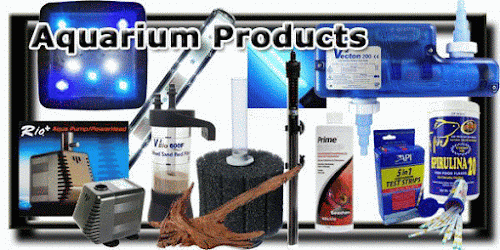Genuine Aquarium Wonder Shell Aquarium Mineral Blocks - from AAP | Disease Preventative
Patent Pending Medicated Version By "American Aquarium Products". Exclusive Aquarium and Pond Water Conditioner.

AAP is THE ONLY Online seller with In Depth Aquarium Chemistry Information and 4 Decades Hands on Experience Using the Wonder Shell, both regular and medicated versions.
Why purchase from parasite retailers including Amazon and get incorrect usage information (the packaging is INCORRECT), as well as possibly less fresh product (which loses its Cation charge over time), inability to get the full line including the Medicated version, and MOST IMPORTANTLY why not support the ONLY seller that has true professional experience and brought this product to market and has done all the "leg work" and without whom, 99% of persons would not know that this product even exists!
Of course this exclusive seller that any honest person should be purchasing from is "American Aquarium Products"

More from the American Aquarium Products (AAP/Weco) Selling Page:
EXCLUSIVE INFORMATION ABOUT WONDER SHELLS
(may not be used without permission from AAP)
• Useful for Important Mineralization/Electrolytes, Calcium Carbonate, Water Hardness Control, & more.
Our FRESH Regular AAP/Weco Wonder Shells Contains Calcium Carbonate/CaCO3+ cations (a VERY important element for proper Osmotic Function in fish as well as Redox Balance™, more important to fish health than parameters such as exact pH!).
ALL minor and trace elements in the exact ratio (with the exception of calcium) as found in the ocean.
A few other elements found in minor & trace amounts include: Magnesium, Chloride, Sodium, Sulfate, Potassium, Bicarbonate, Bromide, Borate, Strontium, Fluoride.
Based on our extensive experience with 1000s of aquarium in our decades of professional aquarium maintenance, the use of AAP Wonder Shells (often at only fractional doses) is superior to other methods of minor & trace element/GH maintenance including over SeaChem Equilibrium (which is still an excellent product, it simply does not provide the continuous mineral Cations to battle oxidative stress)!
Calcium and magnesium have been proven to help fish (and humans) during stress and to help prevent disease due to acid buildup in the brain/body. Important for the prevention (& treatment) of Columnaris and Saprolegnia/Fish Fungus.
These positive mineral ions play a part in prevention of Columnaris by lowering oxidative stress and improving osmoregulation.
Can aid in prevention and treatment of Livebearers/Molly Disease such as "shimmies" and "wasting away" (not from Fish TB) whose general cause is the lack of these important elements.

















